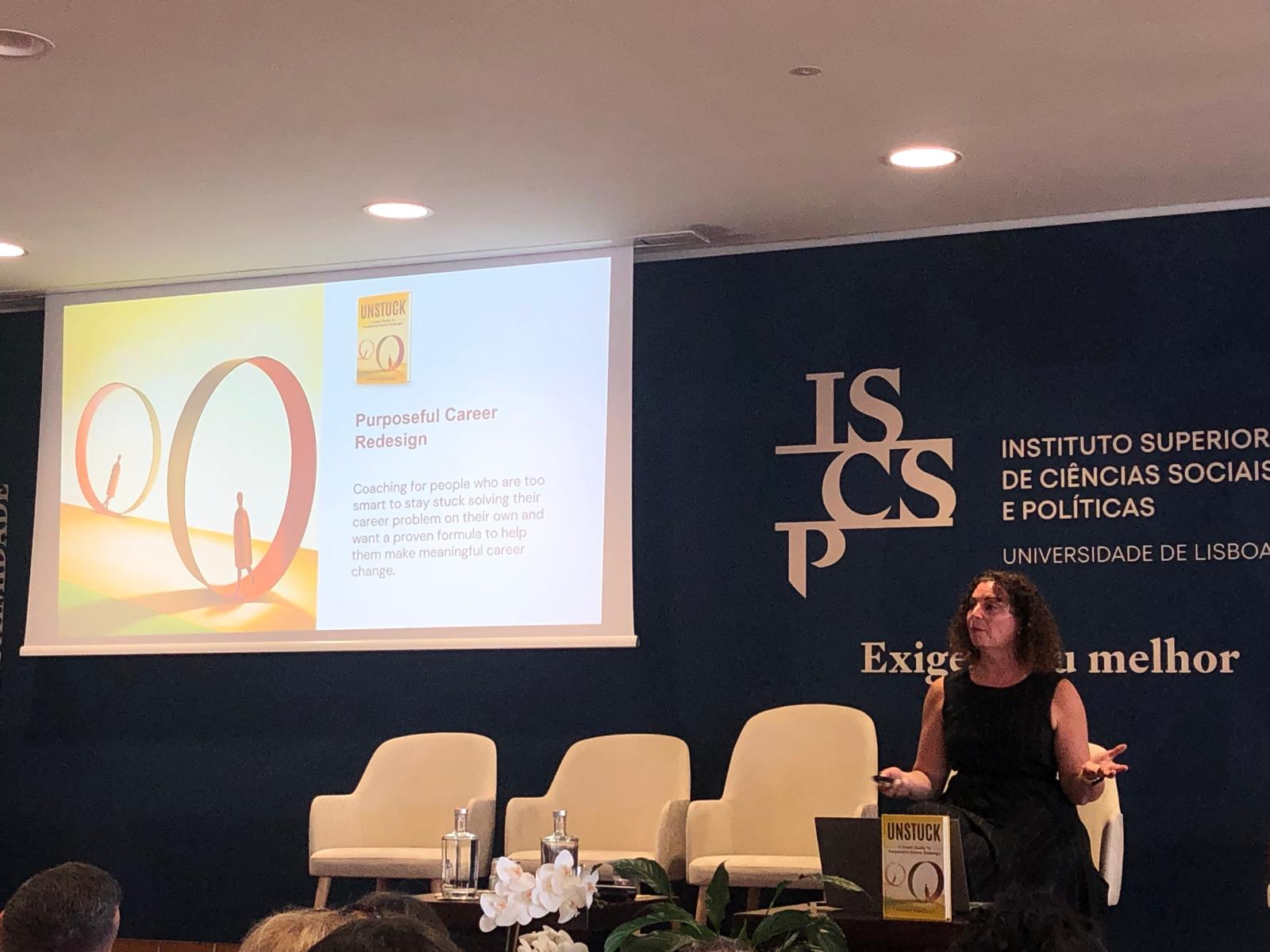We’re almost at that time of year to make resolutions for the year ahead. The majority of my career redesign community is focused on this.
Doing what it takes to achieve the work-life synergy they want next year.
Because despite good intentions, we still don’t always act on the right goals.
The Brutal Facts
As I write it’s nearly the end of another year. Which means in a few short months, we’ll be at the time of year where most of us will have abandoned our resolutions…again.
Until next year, when 60% of people who fail will make the same resolution all over again! Some of us will live on repeat with these resolutions 5 times before succeeding.
Why? Because we’re biased when it comes to ourselves!
- We think we can achieve more than is feasible.
- We think it will be quicker and easier than is realistic.
- We remember feeling good as we made progress before, and bring false hope to why it will go smoother this time.
- We all think we’re better than average (statistically impossible) and overestimate our positive traits (so don’t take in negative feedback that could improve our approach…or our goal-setting).
What can leadership coaching offer to help you crack this brutal circuit and act on your career redesign intentions long enough to actually succeed?
The first step is simple. We tend to be more accurate predicting someone else’s behaviour than our own. Accept your bias and know it predicts your failure. Ask a friend to help you achieve your goals this year.
The Science Bit
The science of self-regulation and why you should care
The science of achieving goals is about the processes we use to direct our thoughts, feelings and behaviours to achieve them.
Or not! And unpacking the disconnect (often called the intention-action gap) gets in the way of perfectly good intentions.
Here’s the good news. Science isn’t always overly complex. It can be clear and instructional too. Learning how the different parts of the process work will help set you up for success in your chosen career redesign goals. So, let’s do the science bit together.
The Best of Intentions
How to close the Intention-Action Gap
Want to know the single biggest predictor of whether you’ll actually achieve your goals? Intending to.
Yet research shows intentions only translate into action about 50% of the time. So, intentions are not everything that’s going on.
And the other 50% – called the intention-action gap – is the subject of much research. And that gap is where most of New Year Resolutions fall down.
Intuitively it feels like some people are better at doing what it takes to achieve their goals than others. You know them when you meet them. They’re self-disciplined, forward-thinking, motivated and resilient sorts. And achieving goals comes down to this mix of traits, skills and abilities, all working to drive what we do – how we act.
Question. Do you think you are good self-regulation? Do you stick to your goals with determination? Test it out for yourself. Objectively.
Because those who overestimate their self-control skills are setting themselves up for failure as they set their career-redesign goals.
Here are 2 questionnaires that will give you insight into different areas of self-regulation.
How gritty are you? Try Angela Duckworth’s Grit Scale. This is about sticking to a longer-term goal and not abandoning it. Good news for my community with their work-life synergy goals – the world of work is where self-control has its strongest impact.
- Self-control. Find out how much you have here. This is about whether you can control your impulses in the face of in-the-moment temptations that conflict with your overall goal! It may not surprise you that our eating and weight is where we’re weakest, despite strong intentions.
So, what’s going wrong here? The scientific studies point at a few things:
- Missing the Moment! Even delays of 5 seconds can see people forget to act as intended, during a really demanding task. Relate that to work. You’re absorbed. Deeply. Focused on what needs to be done/said. So, you forget that thing you decided you want but don’t normally do … ‘til the moment has passed. With its’ window of opportunity to do something different, something you fully intended to act on.
- Giving up too soon. Grit is great when it’s pointed at the right goal. I have written before about how perseverance has a dark power when employed for the wrong reasons. But to be clear, for long-term goals, we need grit. Without it, we give up too early. And there’s so many points that may seem valid…unless we’re gritty about our goal. Otherwise, different desires inevitably compete. Barriers turn up that we didn’t see coming. Life happens and our emotions de-rail us. We spreading ourselves too thin. We run out of willpower.
What About If-Then?
So, we give up because we feel we must. In that moment. But we mustn’t. This is exactly when it matters most.
Awareness of our bias. Looking objectively about what levels of self-control and grit we have built in.
Understanding why good goals fall down the intention-action gap. These will all help.
But there’s more to the science of self-regulation. There is a way to navigate those threats and stay on track. A way to close the intention-action gap.
If-Then Plans (or implementation-intentions)
Think of these as very specific self-instructions linking a situation relevant to your career redesign goal to a goal-directed response. So you have a short-cut all thought out and don’t miss the moment to act. The when, where, how and what you will do in pursuit of your specific goal.
It’s time to think about your own work-life goal using this template. Getting as specific as humanly possible, come up with some if-then plans to help you succeed.
IF: a good opportunity to act shows up – or an obstacle or threat triggers action….
THEN: …. your goal-response is initiated. A specific behavior, doing something in a certain way, stating a boundary or ignoring something / feelings without de-railing.
Don’t skimp on this task. Remember these If-Then Plans significantly increase your chances of achieving your goal.
Mirror, Mirror on The Wall; Show The Truth About My Goal
There is one big problem with If-Then Plans.
They won’t work for people who aren’t actually committed to the goal!
And ‘thinking positive’ can backfire. There’s study after study, showing that those with the most positive thoughts, images – fantasies – about their goals, were the least successful.
Why? Because while positive expectations boost our motivation, fantasies take it too far. They trick the brain to thinking the work is done.
And so kill motivation to put in the time to achieve the goal in real life!
WOOP and all your wishes will be fulfilled
Fulfil your wishes with WOOP
WOOP is an evidence-based mental strategy that people can use to boost their commitment and change their habits. With over 20 years of research, we know WOOP works. WOOP stands for:
- Wish
- Outcome
- Obstacle
- Plan
Known scientifically as Mental Contrasting with Implementation Intentions, WOOP balances positive thinking about our goals, by thinking through the obstacles that might stand in our way of achieving them. We need these so-called negatives. It’s how our commitment dials up. As do rates of success.
So now you know, the 4 letters that spell success are WOOP and how to fulfil your career-life wishes this year!






